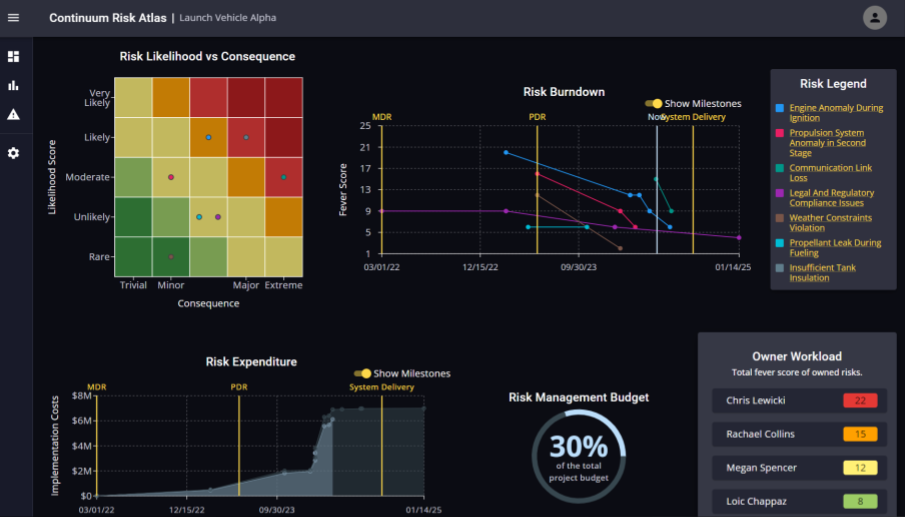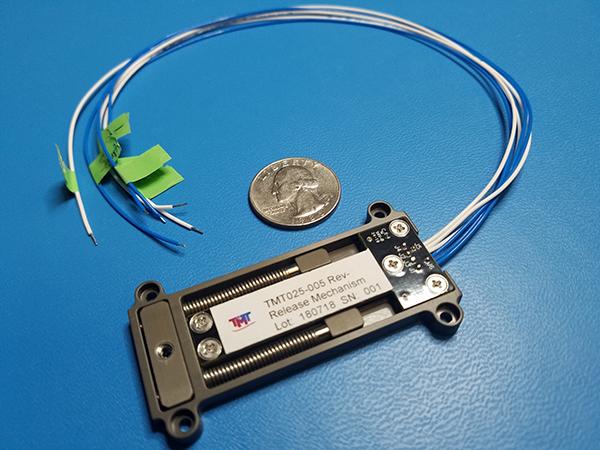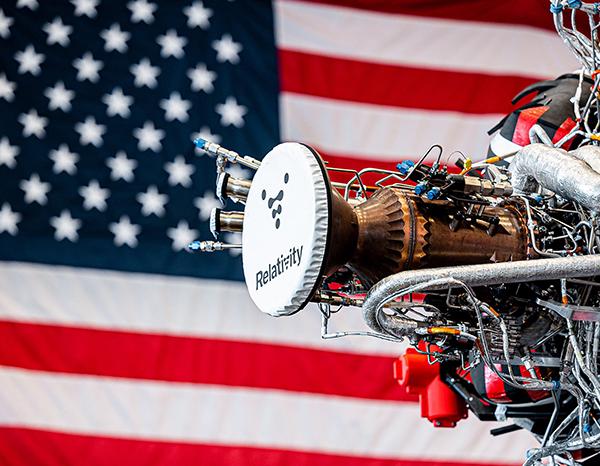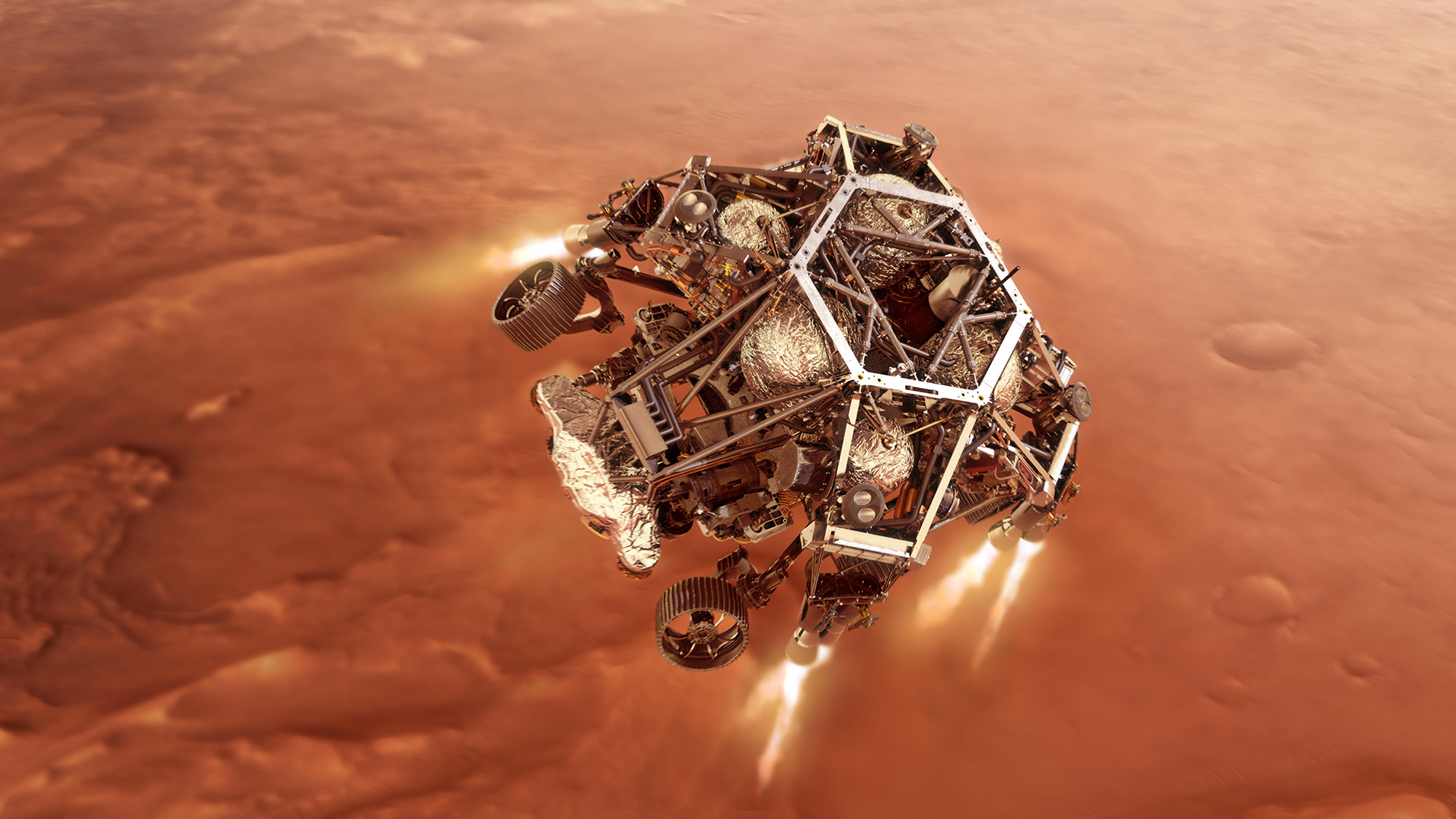
Controlled Propulsion for Gentle Landings
Subheadline
A valve designed for NASA rover landings enables aerospace companies to fly safely
The Curiosity and Perseverance Mars rovers continue to provide a wealth of information about the Red Planet and its history. But if the sky crane landing systems that gently lowered them to the surface had run out of fuel a mile up, none of that would have happened. A successful descent managed by eight powerful engines depended on a small part created by Eaton Corp. It ensured the fuel didn’t leak from tanks during months traveling through space and then flowed freely to execute a gentle landing. That valve is now used on commercial space vehicles.
Working under contract to NASA’s Jet Propulsion Laboratory in Southern California, the company developed a new one-time-use pyrovalve to sit between the hydrazine fuel tanks and the controlled-descent engines. The zero-leak valve was the largest ever made of its type at the time, and at three-fourths of an inch, it now enables commercial rocket-stage separation in space.
Engines producing about 750 pounds of thrust each for Martian surface landing required more fuel than a conventional valve could deliver, said Carl Guernsey, propulsion subsystem chief engineer for the Mars Sample Laboratory mission, which delivered the Curiosity rover. The absolute seal was to ensure adequate fuel for landing because the parachute would not guarantee a soft touchdown.
“With the engines pointing down, we throttle up and increase the thrust, so we slow down,” said Guernsey. “At a certain altitude above the surface, you hold at a constant velocity to collect more sensor data, and then proceed with the rest of the descent.” With only seconds for sensor data to identify the landing area and direct any last-minute diversion maneuvers, landing could only occur with fuel available at the right time.
That required a reliable pyrovalve — a Y-shaped pipe with a pair of leak-proof solid metal barriers that prevent propellant flow until the valve is employed in the descent. The valve contains a pyrotechnic charge that’s fired to activate a piston called a flying ram, which shears off the barriers, carrying them to the bottom of the valve and allowing fuel to flow.
To build the valve, NASA turned to a company that had provided the space program with reliable gas regulators since the 1950s (Spinoff 2019). Through a series of mergers, by 2021, the original company, called Conax Florida, had become part of Eaton based in Orchard Park, New York.
But a problem arose during flight qualification testing. Sometimes the ram didn’t stay wedged in place, posing a risk that it could float back up and block the flow of hydrazine. While the new design worked well in every other way, this issue had the potential to disrupt the launch schedule.
The solution the team came up with was simple — magnets at the bottom of the valve. This ensured the ram was held in place. It worked well enough to fly again on the Perseverance mission.
“When you are up against the wall and have to get something done, you can come up with some great ideas,” said Mosher. The built-to-order pyrovalve created by Eaton now ensures reliable rocket stage separation on commercial rockets.
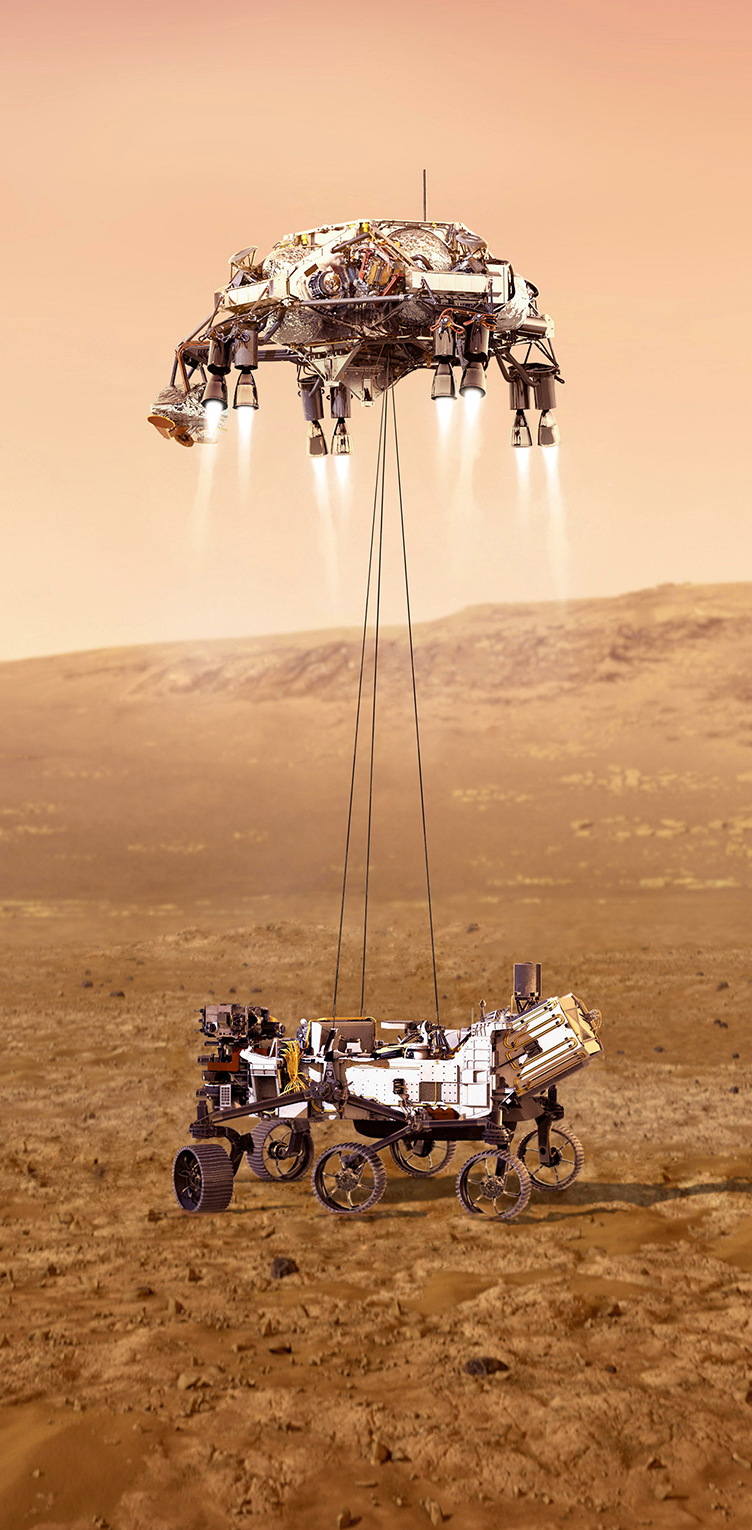
As the sky crane descended toward Mars at approximately 200 mph, eight engines fired to produce a counterthrust to reduce its speed to about 1.7 mph before lowering the rover to the surface. Eaton developed a custom pyrovalve to ensure the fuel was released at just the right moment. Credit: NASA/JPL-Caltech
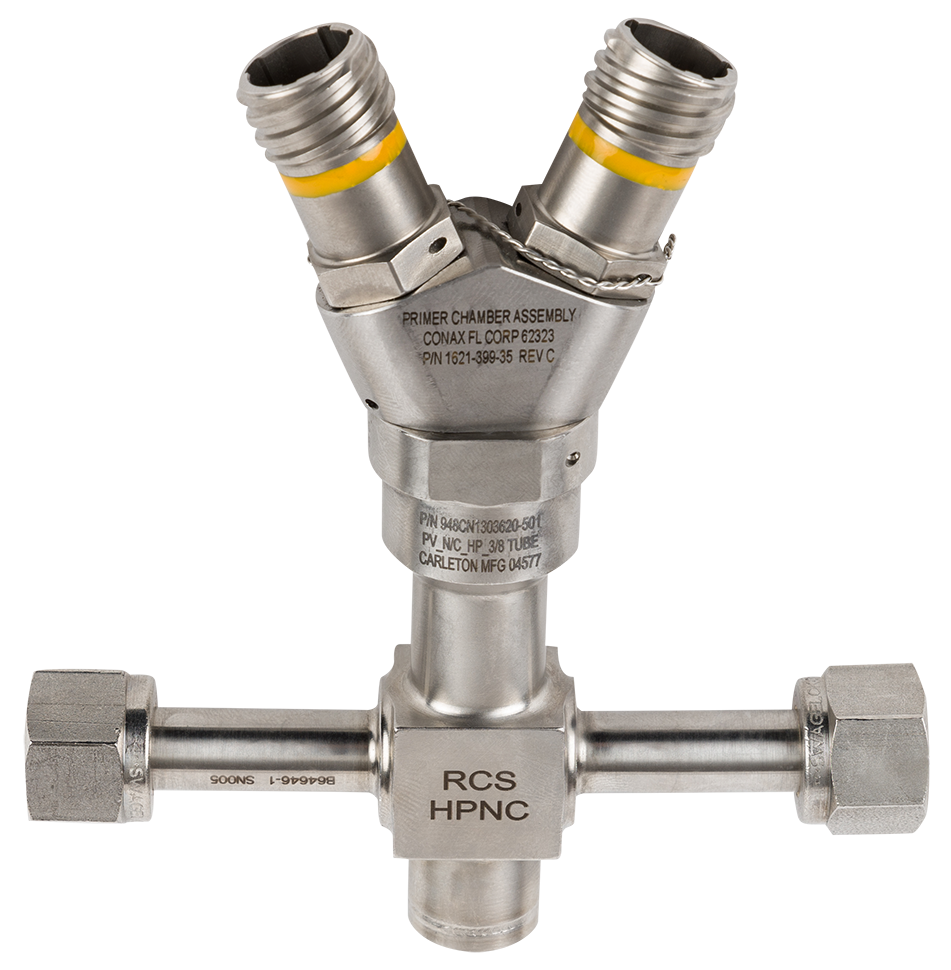
This one-time-use pyrovalve sat between the hydrazine fuel tank and the controlled-descent engines on the sky crane for the Curiosity and Perseverance Mars rovers. The zero-leak valve developed by Eaton also ensured no fuel was lost on the long flight to Mars. Credit: Eaton Corp.

The controlled descent of the Mars Curiosity rover included the use of propulsion rockets pointing to the surface to allow a gentle landing. The engine, shown firing in this illustration of Perseverance and the sky crane landing system, relied on a pyrovalve that released the rocket fuel. Credit: NASA/JPL-Caltech





